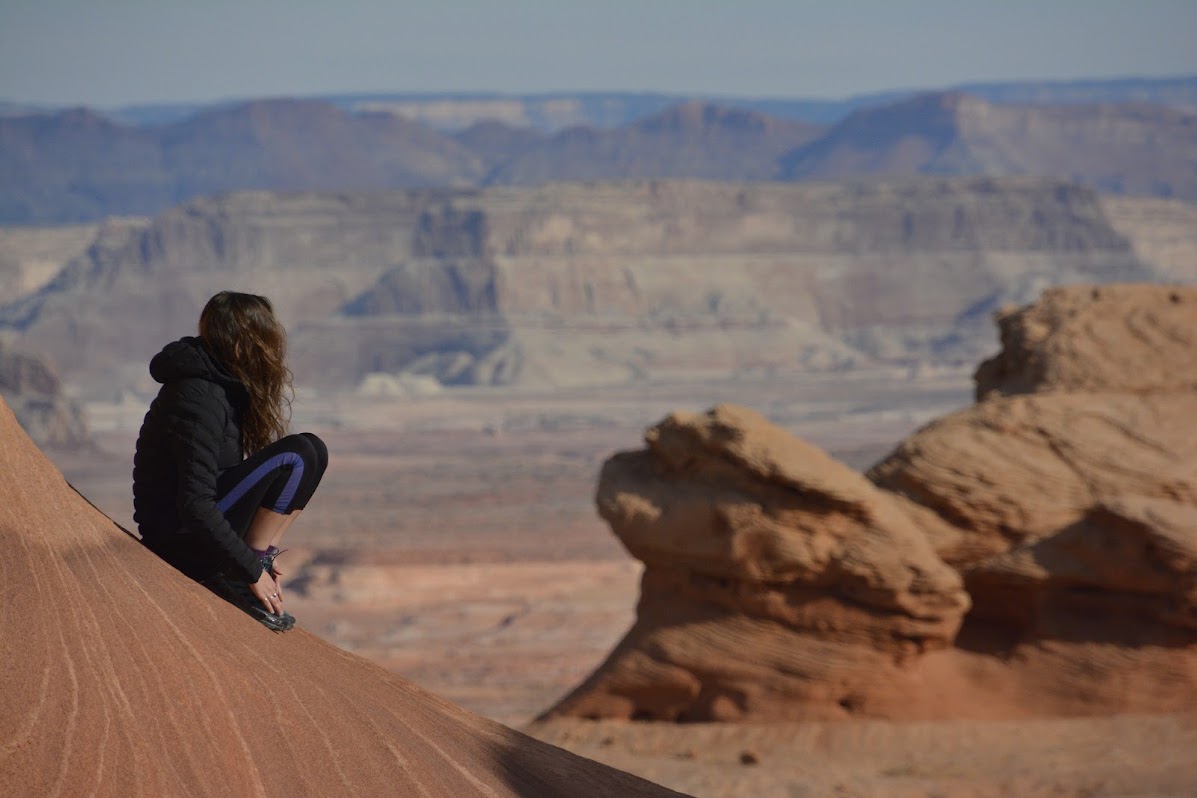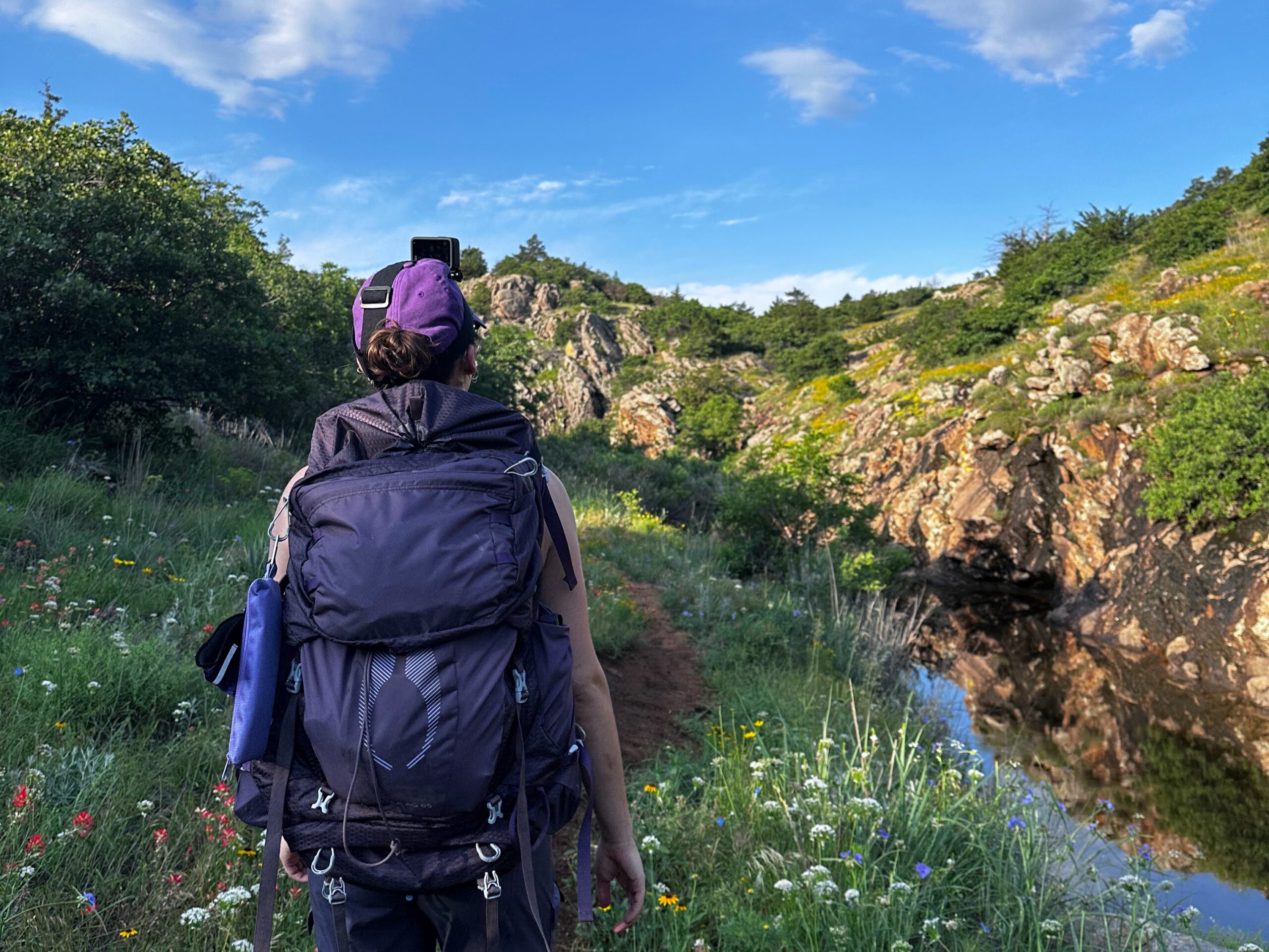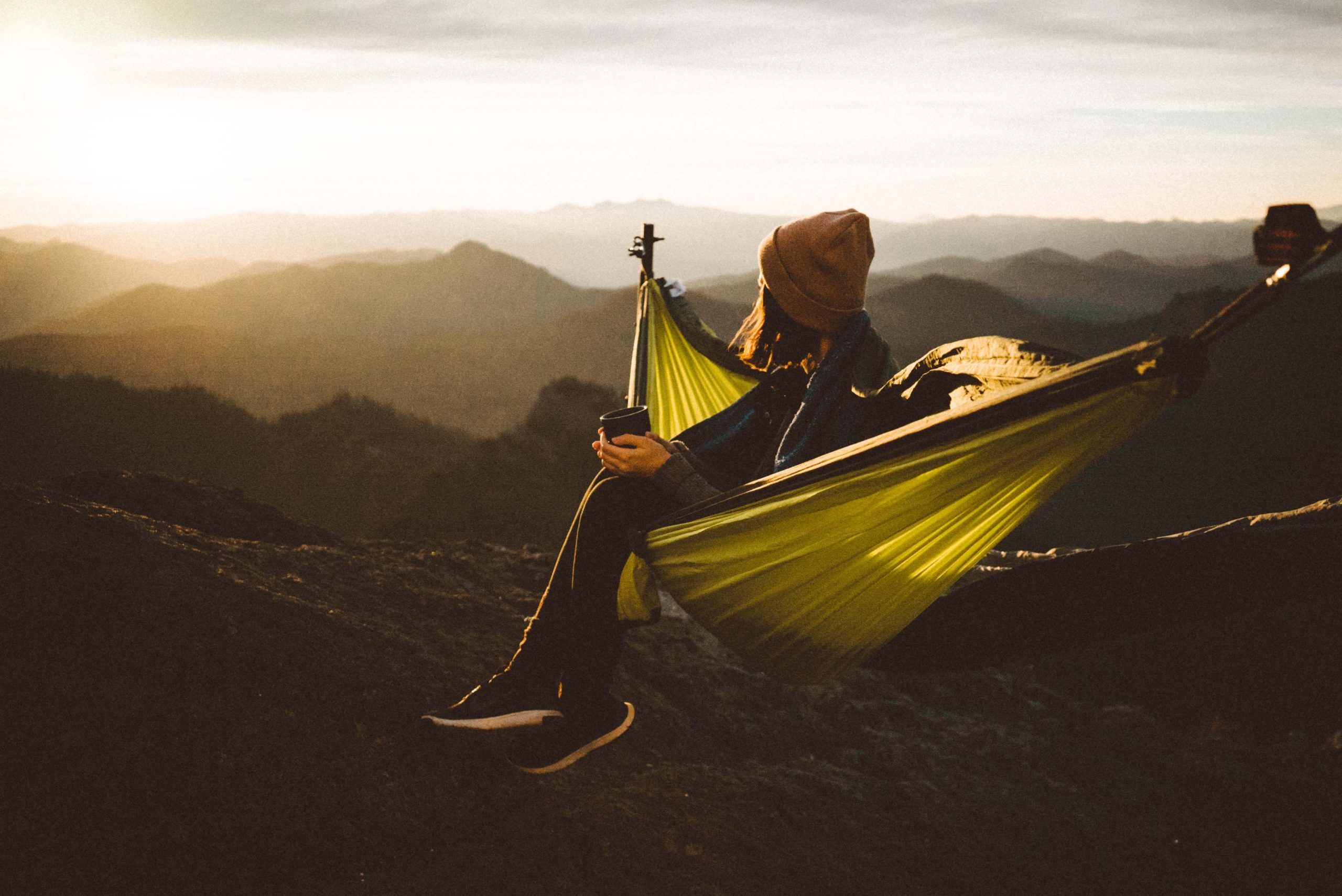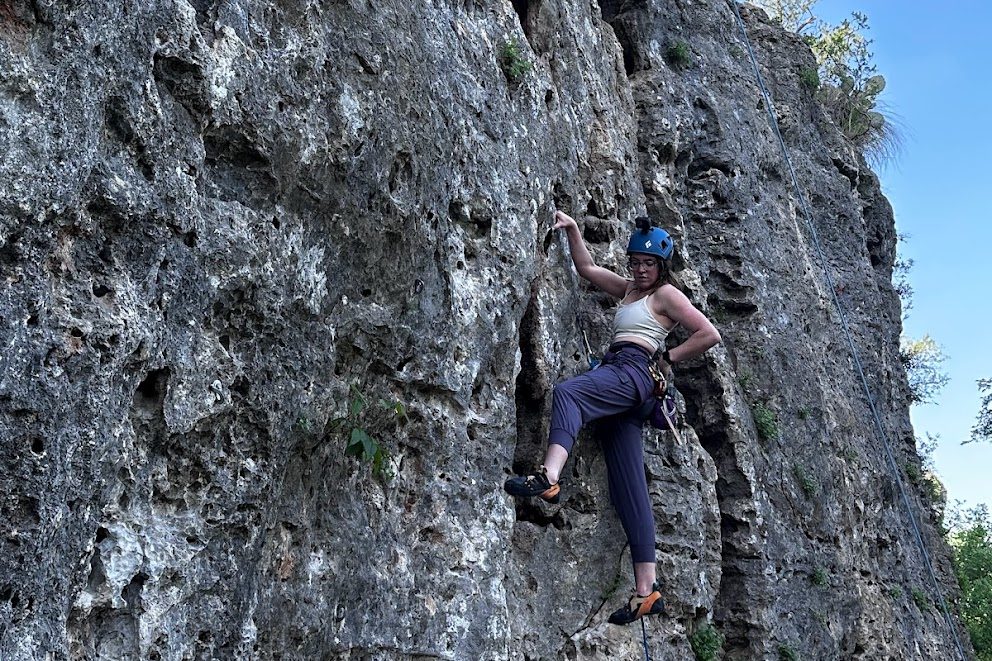

What is solo hiking?
Solo hiking is exactly what it sounds like – hiking alone, whether it be a simple day hike or multi-day trek. You’re out in some sort of wilderness area or trail, relying only on yourself to navigate and manage any challenges that arise during the adventure. While you aren’t physically with any other people, of course, you should still stay in touch with your emergency contacts; always let someone else know where you are going to be and when you are going to be there. Solo hiking can be risky and often requires careful planning and preparation in order to stay safe.
There are many reasons why people would choose to solo hike. Being in solitude, unplugging from the world, connecting with nature – there are many obvious benefits to hiking alone. However, it’s important to remember that, when solo hiking, you are responsible for your own safety. It’s not the best time to take a class 3 detour unless you are 100 percent confident in your abilities.

The benefits of solo hiking
I wrote an entire blog post about the Benefits of Hiking, which I recommend reading if you’re on the fence. Below, you will learn specifically about solo hiking! Hiking on your own can be refreshing and exciting, even for experienced group hikers.
Increased self-reliance and self-confidence
Solo hiking can increase self-reliance and self-confidence in several ways. When hiking alone, there is no one else to rely on for assistance, so solo hikers must be self-sufficient and capable of handling any challenges that arise. This requires careful planning and preparation. As solo hikers successfully navigate the trail and overcome obstacles on their own, they develop a sense of self-reliance and confidence in their own abilities.
In addition, solo hiking can also provide a sense of accomplishment and empowerment. By setting and achieving their own goals, solo hikers can develop a greater sense of self-esteem and self-worth. The solitude and reflection provided by solo hiking can also give hikers a greater understanding of their own strengths and weaknesses, leading to increased self-awareness and confidence.

Opportunity for introspection and mindfulness
Solo hiking can provide an opportunity for introspection and mindfulness in several ways. When hiking alone, there are no distractions or interruptions from other people, allowing hikers to fully immerse themselves in the natural environment and focus on their own thoughts and feelings. This can lead to a greater sense of self-awareness and reflection.
The solitude of solo hiking can also allow hikers to be present in the moment, focusing on the sensations of the trail. This can be a form of mindfulness, where hikers practice being fully aware of their surroundings, without judgment or distraction.
Solo hiking can provide an opportunity to unplug, allowing hikers to fully unplug and recharge. This can be a refreshing break from the distractions of modern life, and helps hikers feel more centered and focused.


Flexibility in planning and pacing
One of the main benefits of solo hiking is the flexibility it provides in planning and pacing. When hiking alone, there is no need to coordinate with others or compromise on the itinerary. Solo hikers can set their own pace and choose the route that best suits their interests and abilities. They can also adjust their schedule and pace to accommodate their own needs and preferences, such as taking breaks or stopping to enjoy the scenery.
Solo hikers can make spontaneous decisions based on their own intuition and curiosity, without having to consult with others. This can lead to unexpected discoveries and opportunities for exploration.
Solo hiking also provides a greater degree of autonomy and independence, allowing hikers to fully take charge of their own experience. This can be a form of self-expression and self-discovery, as hikers make their own choices and shape their own journey.
Enhanced appreciation of nature and surroundings
Solo hiking can enhance your appreciation of nature and your surroundings in several ways. You have the opportunity to fully immerse yourself in the environment and connect with the wilderness on a deeper level. You can take the time to observe the details of the landscape, including the colors and textures of the trees, the patterns of the rocks, and the movements of the wildlife. Without the distractions of others, you can focus on the sounds of the trail, such as the rustling of leaves, the babbling of a brook, or the crunching of gravel underfoot.

Risks and safety considerations of solo hiking
Increased risk of injury or illness
To avoid injury and illness while solo hiking, it’s important to take a number of precautions. Make sure you are physically prepared for the hike by maintaining good fitness levels and gradually building up your endurance. Pay attention to your body during the hike and take breaks when needed to avoid exhaustion and overexertion.
Stay hydrated and well-nourished, and bring plenty of water and food to fuel your body. Be aware of potential hazards on the trail, such as loose rocks, steep drop-offs, or slippery surfaces, and take caution to avoid accidents or injuries.
Increased vulnerability to animal attacks or other hazards
In order to avoid animals and other hazards while solo hiking, it’s important to take several precautions. First, research the wildlife in the area and learn how to avoid encounters with them. This may involve making noise to alert animals of your presence, carrying bear spray in areas with bears, or avoiding hiking during certain times of the day when animals are most active.
Second, watch your step and be aware of potential hazards on the trail, such as loose rocks, steep drop-offs, or slippery surfaces. Staying on designated trails and following posted signs can also help reduce the risk of encountering hazards. Finally, bring a map and compass and familiarize yourself with the trail and surrounding area to help navigate in case of getting lost or disoriented.

Importance of preparation and planning
Preparation and planning are crucial for a safe and enjoyable solo hike. Start by researching your destination and the trail conditions, including the terrain, distance, and elevation gain. Make sure you have the necessary gear, including appropriate footwear, clothing, and a backpack with food, water, and a first aid kit. Consider the weather conditions and pack accordingly, bringing extra layers or rain gear if necessary. Additionally, ensure you have the skills and experience you need to tackle the hike. You might even consider taking a wilderness first aid or survival course.

Preparing for a solo hike
Researching the trail and surrounding area
Researching a trail for a hike is an important step to ensure a safe and enjoyable hiking experience. To start, look for trail information from reliable sources such as guidebooks, websites, or online forums. This will help you find trail descriptions, maps, and reviews from other hikers. Once you have a list of potential trails, consider the trail difficulty and terrain, as well as your own fitness level and experience.
Look for potential hazards on the trail such as wildlife, river crossings, or steep drop-offs, and take necessary precautions. Check for any permits or regulations required for the trail, and research the trailhead ahead of time. Lastly, consider joining a hiking group or finding a hiking partner to share the experience with, especially if you are new to hiking or unfamiliar with the area.


Packing essential gear and supplies
When preparing for a hike, there are several pieces of gear that you should bring to ensure your safety and comfort on trail. You will need appropriate footwear to protect your feet and ankles from injury. You should also have a backpack to carry your gear, food, and water. If you can’t download the trail onto your phone, take a map with you to avoid losing your way.
Other important items include a first aid kit, a headlamp or flashlight, sunscreen and insect repellent, and a multi-purpose tool. It is also essential to bring enough water and food for the duration of your hike, and to bring a water filtration system or water purification tablets if there is a chance you may run out of clean water on the trail. You can find a more detailed gear list on my blog post about the Sonoran Desert: Hiking Essentials List.
Communicating plans with friends or family
It’s important to communicate your solo hiking plans with friends or family members before embarking on your hike. Start by sharing your itinerary as well as any potential hazards or risks on the trail. Make sure to provide contact information for yourself and any emergency services in the area. In addition, establish a plan for how often you will check in with your contacts during the hike. Consider sharing your location with a tracking device or GPS app, and make sure your contacts know how to use it.

Tips for solo hiking
Stay aware of surroundings and listen to your intuition
Solo hiking can be a wonderful experience, but it’s important to take precautions to stay safe. Before you set out on your hike, make sure you have a clear understanding of the trail and any potential hazards or landmarks along the way. Use a map, GPS device, or hiking app to help you stay on track.
Stay aware of your surroundings at all times. Take note of any changes in the environment, such as weather patterns, wildlife activity, or changes in the terrain. If something doesn’t feel right, trust your instincts and err on the side of caution. This could mean turning back, changing your route, or taking other precautions to stay safe. Avoid distractions like headphones or other electronic devices that may distract you from your surroundings. If I feel comfortable enough, and want to listen to music, I’ll put one earbud in and keep the other out.
Consider carrying a personal safety device, such as a whistle, pepper spray, or personal locator beacon, in case of an emergency. Let someone know your planned route and expected return time. Check in with them when you return to let them know you’re safe.


Keep a positive attitude and stay motivated
While solo hiking, it can sometimes be challenging to stay positive and motivated. Before you set out on your hike, set achievable goals for yourself. Examples might be reaching a certain landmark or completing a certain distance. These goals can help keep you focused and motivated throughout your hike.
It’s important to take regular breaks to rest and recharge, particularly on longer hikes. Use these breaks as an opportunity to enjoy the scenery, refuel with a snack or drink, and take in the experience. Focus on the positive aspects of your experience, such as the beautiful scenery or the sense of accomplishment you’ll feel when you reach your destination.
When you hike, focus on the present moment and enjoy the journey rather than fixating on reaching your destination. Take in the sights, sounds, and smells of the environment around you, and allow yourself to be fully immersed in the experience. Use this time to reflect on your thoughts and feelings, and appreciate the sense of calm and tranquility that comes with being alone in nature.
By following these tips, it will be easier to stay positive and motivated while solo hiking!

Practice Leave No Trace principles and respect nature
Leave No Trace is a set of principles aimed at reducing the impact of outdoor activities on the environment. Here are some tips for following Leave No Trace principles while hiking:
- Plan ahead and prepare: Before you set out on your hike, research the area and its regulations to ensure you’re aware of any specific rules or guidelines. Plan your route and pack appropriately, taking only what you need and avoiding single-use items.
- Travel and camp on durable surfaces: Stick to established trails and campsites to minimize your impact on the surrounding environment. If camping, choose a durable surface and avoid camping within 200 feet of lakes and streams.
- Dispose of waste properly: Pack out all trash, leftover food, and litter. Use established restroom facilities when available, or bury human waste in a hole at least 6-8 inches deep and at least 200 feet from water sources.
- Leave what you find: Avoid disturbing or removing natural or cultural artifacts, including rocks, plants, and historical artifacts.
- Minimize campfire impact: Use a lightweight stove for cooking instead of building a campfire. If campfires are allowed, use established fire rings and only burn small sticks and twigs found on the ground. Never cut live trees or branches for firewood.
- Respect wildlife: Observe wildlife from a distance, never feed them or approach them too closely. Store food and scented items in bear-resistant containers. Alternatively, hang them at least 10 feet off the ground and 4 feet from any tree trunk.
- Be considerate of others: Everyone deserves to enjoy the outdoors in the same way and has their own personal preferences when it comes to how they enjoy their time outside. If you’re hiking downhill, step aside to let uphill hikers pass. If you do listen to music, use earbuds or headphones (remember the one-ear trick for safety). Of course, keep your pets in control and remove their waste as well.
By following these tips, you can minimize your impact on the environment and help preserve natural areas for future generations to enjoy. Learn more at lnt.org.



Manage loneliness or fear
Solo hiking can be a fantastic and empowering experience, but it’s common to feel lonely or afraid at times. To manage those feelings, first make sure you’re properly prepared (as explained above). Feeling physically comfortable and safe can alleviate some of the fear and anxiety that can come with solo hiking.
Mindfulness and grounding techniques can also help keep you calm and centered. Think about bringing along a book, journal, or music to keep yourself company and help pass the time. Remember that it’s okay to feel lonely or afraid, and that these emotions are a natural part of the solo hiking experience.
Recap
Solo hiking can be a truly enriching and rewarding experience. Not only does it provide an opportunity for exercise and adventure, but it is also a time for personal growth. If you’re feeling curious or adventurous, I encourage you to give solo hiking a try. Who knows, it may just become your new favorite hobby!
I recommend reading these next:




One thought on “Solo Hiking: Everything You Need to Have a Blast”
Comments are closed.